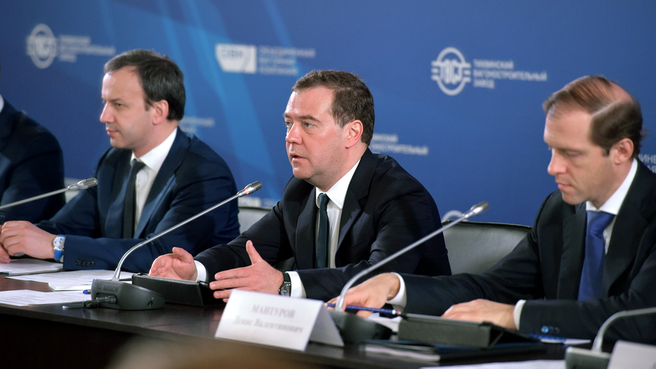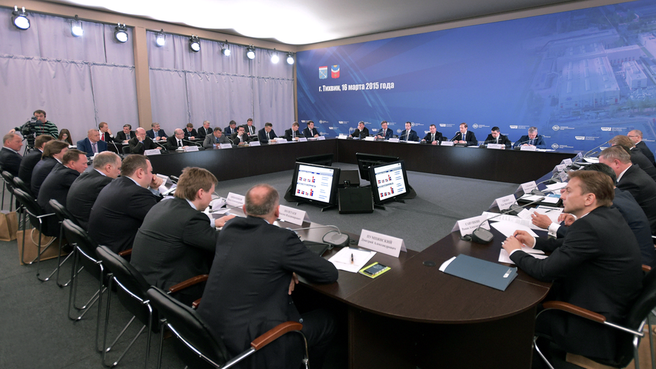From Dmitry Medvedev's opening remarks at a meeting in Tikhvin, in the Leningrad Region.
Dmitry Medvedev: Modern and safe transport is a pillar of any economy. The state of many industries depends on the situation in this sector. The Ministry of Industry and Trade is drafting the development strategy of the transport engineering sector up to 2030. I hope that industry representatives and experts will participate most actively in drafting this core document.
Currently, the industry is called upon to manufacture a modern and innovative rolling stock. Of course, we need to put a stake on safety, maximum profitability and rapid transit.
In the future, there should be no place for uncomfortable old commuter trains and old carriages with numbered reserved seats. It is high time we began scrapping these transit systems.
People in Russia spend a lot of time riding trains. Local distances are measured in thousands of kilometres. And, of course, it is our task to create all the necessary conditions for safe and comfortable transportation.
On the whole, we are financing the creation of cutting-edge technology in this sector. In late 2014, railcar builders received about 700 million roubles, and this made it possible to manufacture over 10,000 new railcars. Despite the current complicated market situation, we need to invest in corporate modernisation in the future. Last year alone, five plants implementing production modernisation projects received subsidies worth almost two billion roubles.
Russian Railways is implementing its own investment programme. Apart from production, we are financing research and development projects, although the scale of this funding probably does not meet our expectations. But the funding is, nevertheless, available.
We have developed state-of-the-art locomotives and railcars. Currently, several companies, including the Tikhvin Plant, are making the most advanced railcars.
The excessive number of old railcars and their level of wear and tear is among the industry’s major problems. Virtually a quarter of our freight cars (or about 300,000) have already expended their service life. It appears that an additional 100,000 railcars will also become obsolete by 2020. Naturally, this is causing negative consequences, including a railcar industry slump.
In addition, prices for the use of railcars have now decreased, and this has created problems with servicing loans and leasing obligations. This is one of the problems.
Unfortunately, freight delivery speeds have plunged by 25 percent on 2009. Obviously, this calls for balancing the capacity of railcar plants and the performance of operators, and for creating demand for new carriages.
Today, I would like to ask you to formulate proposals on how to address these problems.










